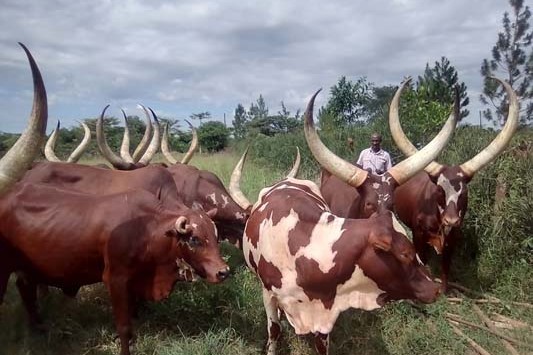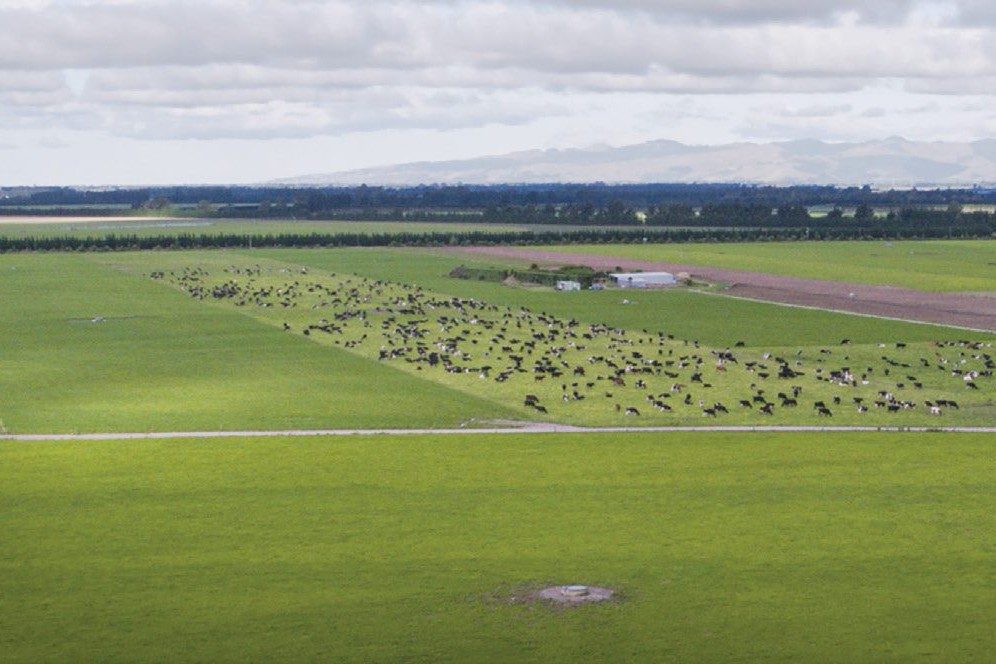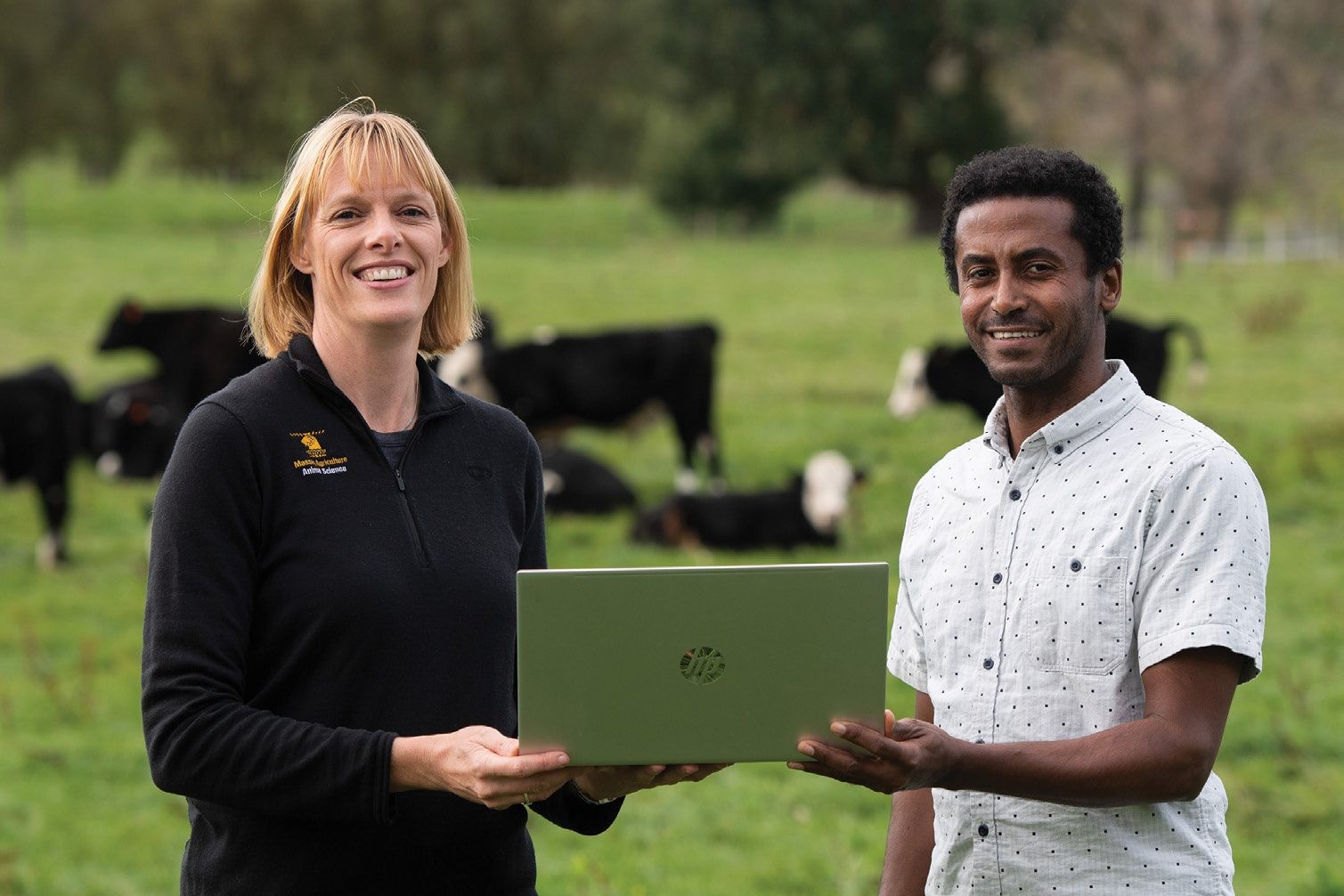Despite temptation to buy a bunch of new kit with the latest record dairy payout, farmers are being advised to pay down debt and invest to cope with environmental regulations, Phil Edmonds reports.
In October Fonterra upped its forecast milk price for the season to a range of $7.90 to $8.90/kg milksolids (MS). Something in between could signify a record for New Zealand dairy farmers and represent a chunky increase on last season’s final wash up of $7.54/kg MS.
Without doubt, many farmers will have started planning on how to spend the projected windfall.
‘Be cautious’ is a predictable message coming through from those with foresight. But after caution is taken care of, this does represent a moment that hasn’t been around for a while where farmers will have an opportunity to make significant capital investments. This time however it’s far less likely to be: buy the neighbour’s farm; more probable will be prosaic resilience building.
First, a stab at some numbers. What extra income are farmers realistically looking at?
If we consider averages, it could realistically be six figures. Based on DairyNZ analysis, the average output per herd is 169,595kg. If the midpoint of Fonterra’s current milk price forecast is taken ($8.40), that adds 86c to the per kg price from last season, which for the average farm comes in at $145,800. If we take ANZ’s slightly more modest forecast price ($8.20), the extra income reaches $112,000.
At the top end, ASB is forecasting $8.75 which would bring in north of $205,000 over last season’s return. Even this may yet be undercooked. NZX milk price futures are signalling an extraordinary $9.07 offer for this season, and a possibly more significant $8.80 for the season ending September 2023.
Whatever washes up, it will likely mean a considerable increase in lolly.
Of course, that extrapolated increase in income is a very gross figure. Grant Robertson and friends will want their share of that, which is something some farmers may not have been thinking too much about.
And then there’s the hike in onfarm costs everyone is experiencing. AgFirst economist Phil Journeaux says one of the dangers of increases in income is a complementary increase in costs.
“There’s not necessarily a strong correlation between rising income and rising expenses, but at the moment onfarm cost inflation has accelerated. Particularly significant at the moment are fertiliser costs, which are likely to be semi-permanent.
“Farmers will need to keep this mind – if the payout was to drop, the cost of fertiliser isn’t going to automatically fall in conjunction.” The same will be true of feed and vehicle costs.
Somewhat surprisingly (particularly given the way the milk price futures are tracking), some farmers are steadfastly focused on the incremental costs identified above. This is reflected in recent rural confidence surveys, and in DairyNZ’s View from the Cowshed which presented a downbeat sense of the industry’s hopes for near-term prosperity. Nearly 20% of those farmers surveyed said increasing costs for farm expenses was the number one issue impacting their profitability.
In reality, this fear is likely to be misplaced. Journeaux’s analysis shows working expenses this season are well covered at $8.00kg MS, so earnings over and above the $8.00 mark should then trickle out into capital spending, including the inevitable new tractors and quad bikes, and then farm development beyond maintenance.
It would be difficult to find cause to believe the season will be anything like a modest breakeven one. And no one should really be considering it a ‘catch up’ season.
“There may be a little bit of catch up, but we have had pretty good payouts for the past three years, so most farmers should have ‘caught up’,” Journeaux says. Indeed, anyone still struggling to cover costs will be underperforming and it will probably be due to factors beyond the mean.
Rural professional service firm BakerAg models a 415-cow, 160-hectare lower North Island farm and consultant Martin Boyle says when reviewing the model farm’s budget, cost creep is now factored in. They have identified farm operating expenditure to increase 9% from the 2020-21 season, with fertiliser costs leading the charge, up 40%. But BakerAg has pinpointed a definitive opportunity for farm businesses to spend more; based on a $8.19 milk price for the 2021-22 season, an allowance has been made for a 115% increase in capital expenditure and compliance from last season.
So, what’s on the shopping list?
Predictably, debt repayment will be in capital letters at the top of the list. Journeaux says bringing debt down still needs to be the focus – if for nothing else because the less debt you have, the more opportunity you have to navigate through a future season where the payout drops, and potentially need to re-borrow.
“There’s a rule of thumb that debt servicing shouldn’t be more than 25% of your gross income, and it’s still a good one.”
Not only does paying down debt make sense at a farm business level it also eases concerns of the lenders and may ultimately lead to fresh funds becoming more available to the sector. In its November Financial Stability Report, the Reserve Bank noted the dairy sector has continued to deleverage with higher export prices, and the total sector debt per kg MS produced is now back at early 2015 levels. That should keep falling before it plateaus.
Journeaux says now is the time when most of the farmers who got hit with the price slump in 2015 are able to actively pay that down. The Reserve Bank also noted that “banks are continuing to encourage dairy farmers to improve their long-term viability, which will ensure they are better placed to deal with any potential future downturn in dairy prices.”
Beyond reaching a position where debt is manageable, long-term viability is another way of saying check your farm’s warrant of fitness. And this is where professional advisers are expecting the funds left over from the elevated payout should spill into.
Journeaux suggests completing a farm environment plan is the best first step, as it will give farmers some idea what needs to be done in the next five to 10 years.
“It’s a little bit tricky at the moment because in many regions we still don’t know what all the rules will be, and we don’t know the rules around reducing greenhouse gases, other than we need to reduce them.” But getting underway with this is effectively ensuring your operation is ‘viable’, in the eyes of the banks.
This view is endorsed by NZX dairy insights manager Stu Davison, who is seeing a change in focus among farmers actively looking to future-proof their farms with some anticipation of surplus income.
“As an example, Waikato farmers have been aware their existing clay-lined ponds need to be replaced with plastic-lined ones for some time but are now considering moving forward with the change.
“They know that now is a good time to invest for environmental compliance if they can, because if the milk price turns, they may not have a resilient business if they haven’t invested in these measures.
“Farmers are looking at the milk price and realise they’re better playing the game than putting their head in the sand. There’s an awareness that if you want to be able to operate, you have to play the game.”
This latter finding is being evidenced on the ground. AgFirst director and environmental engineer Davieth Verheij says he’s been receiving a lot more inquiries as the milk price has firmed with upside risk.
He’s been engaging with farmers in Waikato and Taranaki who have consents coming up for renewal in the next five years.
“I’m getting calls from dairy farmers who have had design work done but haven’t yet completed their project. Now they’re saying the payout is looking good, let’s get it done.” Farmers are well aware of the changing regulatory landscape and realise that it’s worth getting in now ahead of the compulsion.
But it’s not just about doing the bare minimum. Farmers are now starting to address silage and feed storage issues even though rules have not necessarily been enforced. Verheij says he’s seeing new silage bunkers and catchment systems going in on farms with more and more people starting to look at these things and sharpen up their businesses.
More investment is also likely to be seen in the uptake of water monitoring, proof of placement solutions and failsafe type infrastructure.
“Over the past 10 years there have been a lot of upgrades in infrastructure to physically make effluent spread further, with more storage. Now we are starting to see some fine tuning going on utilising the more advanced technology.”
All this suggests the next year could become something of a watershed moment where agritech solutions that enhance environmental sustainability become normalised and potentially switch from ‘nice to haves’ to ‘must haves’.
Reflecting on how farmers are approaching their strategic planning compared with 2014 when the payout last exceeded $8.00kg MS, Martin Boyle says the options to expand farm operations as they did then are severely limited now. Not only was there less environmental regulation seven years ago, but banks were a lot looser with their money. There will be some opportunities to buy neighbouring farms, but not a high percentage. There will however be a higher proportion of farmers looking to shore up their businesses with more environmental resilience and also succession building.
Ticking the environment is the new buying another farm.





